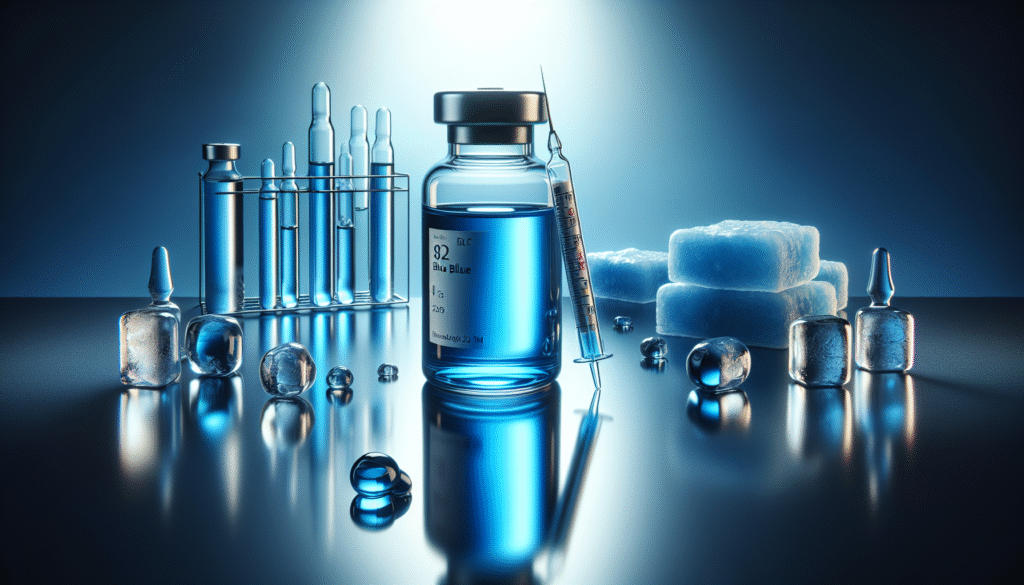
Are you aware of the optimal methods to store Methylene Blue to ensure its longevity and effectiveness? This vital compound, recognized for its diverse uses in laboratories and various industrial applications, requires careful handling and storage to maintain its potency over time.
Understanding Methylene Blue
Methylene Blue is a synthetic dye used extensively in microbiology, histology, and certain medical applications. It’s important to have a firm grasp on what Methylene Blue is, its properties, and its applications before diving into storage methods.
Chemical Properties
Methylene Blue (C16H18ClN3S) is a crystalline powder that has a vibrant blue color. It exhibits solubility in water and requires specific conditions for maximum stability. The thermal stability of Methylene Blue is relatively high; however, it is susceptible to degradation when exposed to light and certain temperatures. Understanding these properties is crucial for effective storage.
Applications
Methylene Blue is utilized in various areas including:
- Medicine: Often used as a treatment for methemoglobinemia, it serves as an antidote for certain kinds of poisoning.
- Biochemistry: Applied as a redox indicator in titrations and as a stain for biological tissues.
- Research: Commonly employed in the study of cells and microorganisms.
Recognizing its applications can help in appropriately determining how to store it for specific use cases.
Factors Impacting Shelf Life
Multiple factors can influence the shelf life of Methylene Blue. Understanding these factors enables you to implement effective storage solutions.
Light Exposure
One of the most detrimental factors to Methylene Blue is exposure to light. UV radiation can lead to degradation, which causes a reduction in effectiveness.
Temperature Conditions
Temperature plays a critical role in the stability of Methylene Blue. Holding it at high temperatures can expedite its degradation process while extremely low temperatures can lead to crystallization.
Humidity Levels
Humidity can also impact the storage conditions of Methylene Blue. Excess moisture may lead to the compound clumping or degrading, thus affecting its usability.

Best Practices for Storing Methylene Blue
Knowing the right practices for storage can significantly enhance the shelf life of Methylene Blue.
Sealing and Packaging
Proper sealing of Methylene Blue is critical. The choice of container can make a big difference.
- Material: Use opaque glass or high-quality plastic bottles that minimize light exposure.
- Tight Seal: Ensure that the bottles are tightly sealed to prevent air and moisture ingress.
Environmental Conditions
Maintaining stable environmental conditions can prolong the shelf life of Methylene Blue.
Ideal Temperature Range
- Optimal Range: Store between 15°C to 25°C (59°F to 77°F) to avoid compromising stability.
- Avoid Freezing: Prevent exposure to freezing conditions as it can lead to the formation of ice crystals.
Humidity Control
- Dry Environment: Store in a dry place. Aim for relative humidity levels between 30% to 50%.
| Condition | Ideal Range | Effect on Methylene Blue |
|---|---|---|
| Temperature | 15°C to 25°C | Maintains stability |
| Humidity | 30% to 50% | Prevents degradation |
| Light Exposure | Minimal | Preserves effectiveness |
Monitoring Shelf Life
Even under optimal storage conditions, it’s essential to monitor the shelf life of Methylene Blue.
Expiration Dates
Always check for an expiration date and document when the product was purchased. This allows for clear tracking of efficacy.
Sensory Checks
Prior to using Methylene Blue, conduct sensory checks:
- Color: Should remain a stable blue.
- Clumping: Check for any precipitate formation or clumping, which indicates degradation.
Labeling and Documentation
Accurate labeling and documentation of stored Methylene Blue help maintain clarity in its usage and monitoring.
Labeling Guidelines
Include essential information on the label:
- Date of Purchase
- Expiration Date
- Storage Conditions
Record Keeping
Maintain a logbook for tracking:
- Usage dates
- Effective life span
- Any observed changes

Handling Methylene Blue Safely
While you focus on maximizing the shelf life of Methylene Blue, safe handling practices cannot be overlooked.
Personal Protective Equipment (PPE)
When working with Methylene Blue, ensure you are wearing suitable PPE:
- Gloves
- Safety goggles
- Lab coat
Spill Response
In case of spills, act swiftly but cautiously. Use absorbent materials to clean up, and follow appropriate waste disposal guidelines for chemical substances.
Conclusion
Understanding how to store Methylene Blue effectively is vital for maintaining its stability and extending its shelf life. By employing proper storage techniques, monitoring environmental conditions, and embracing safety precautions, you can ensure that Methylene Blue remains potent and effective for your applications. Implement these best practices in your routine, and you will maximize the value and efficiency of this important chemical compound.